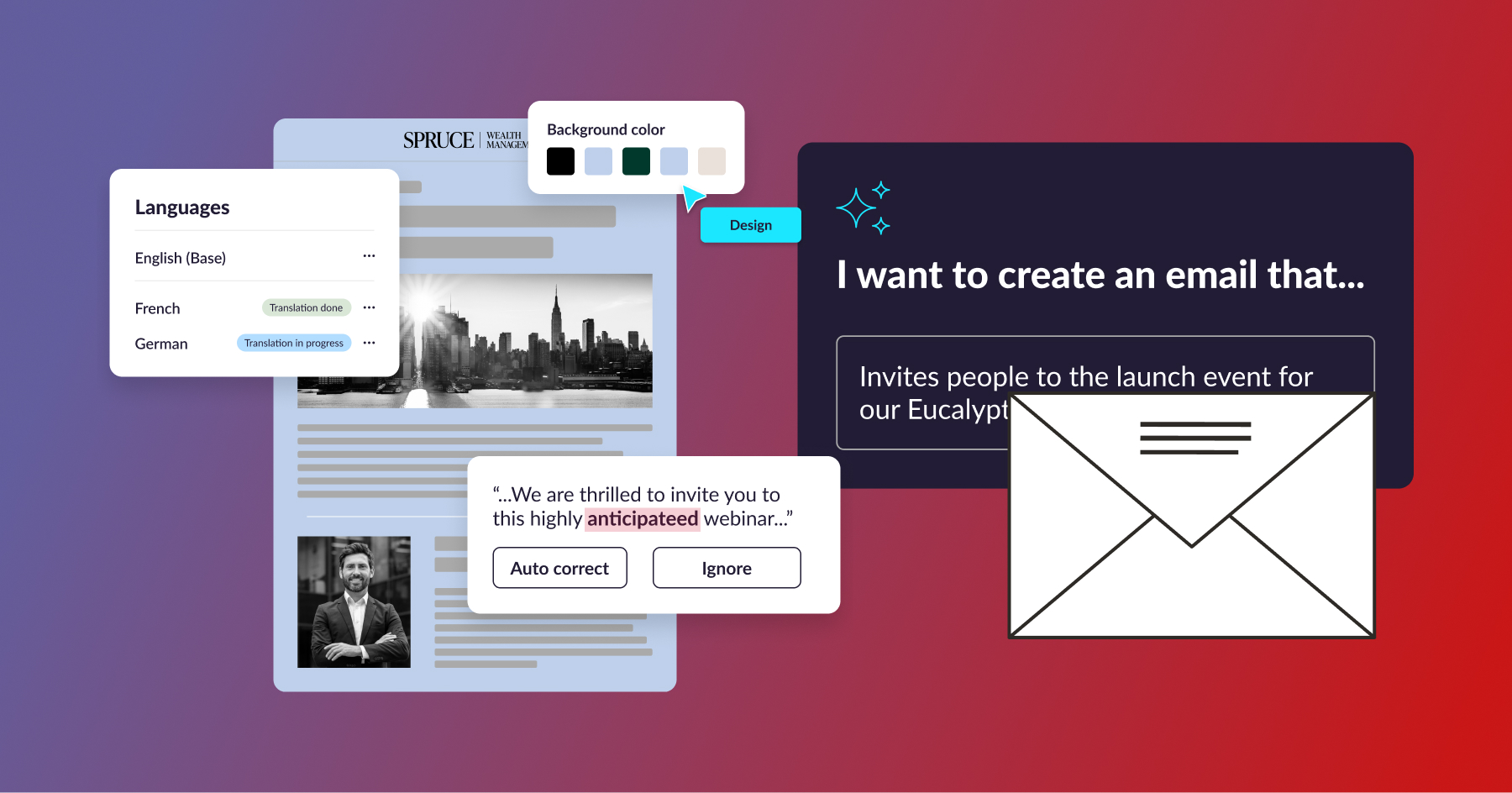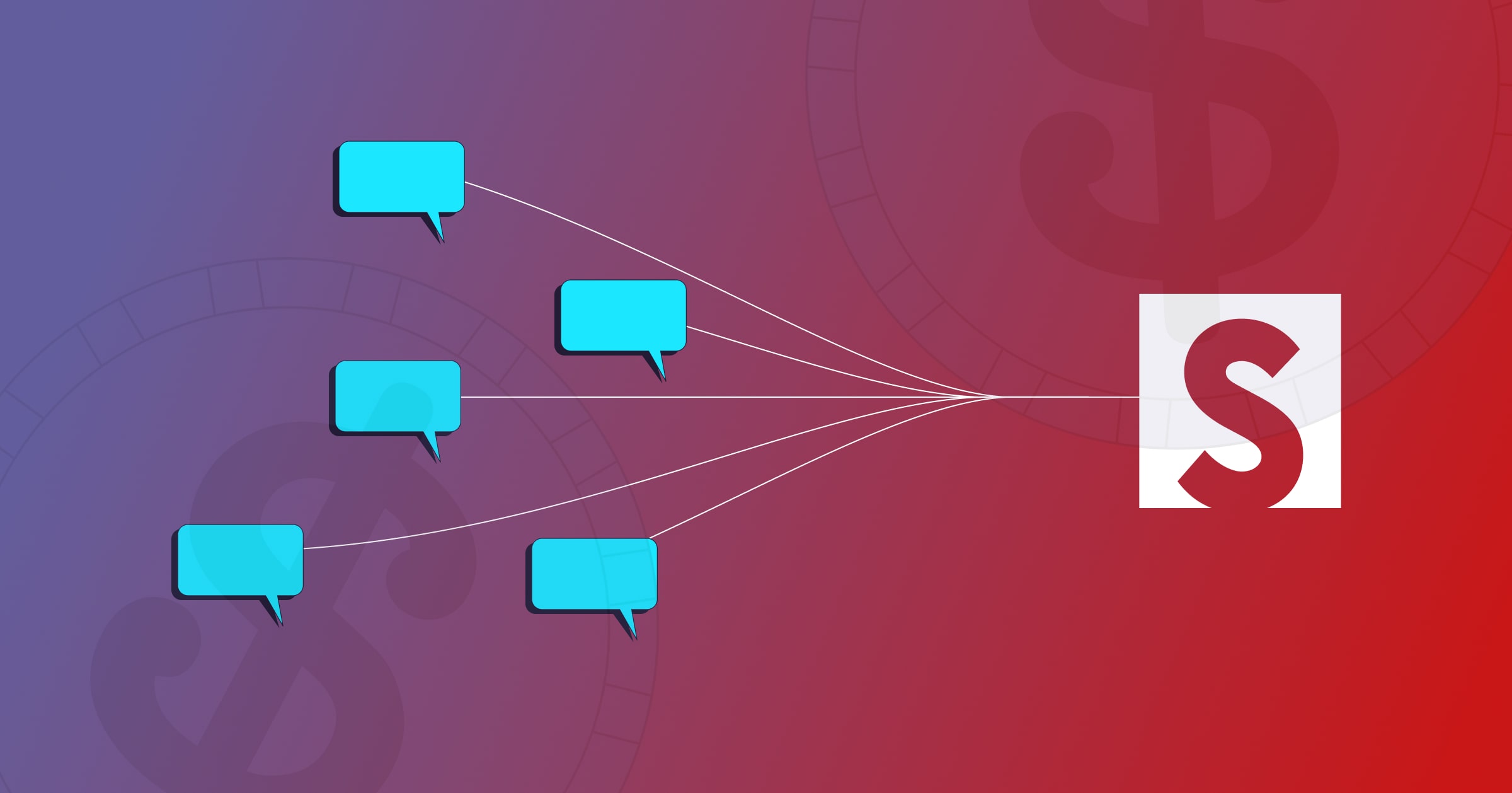Scott Brinker has always been fascinated by technology. As a teenager, he developed BBS software and dial-up multi-player games. Now, he’s the VP of Platform Ecosystem at HubSpot, Editor at chiefmartec.com, and Program Chair of the popular MarTech Conference series.

Prior to this, he was co-founder and CTO of ion interactive, a software company that providers marketers with a platform for creating and testing interactive content. He’s also helped run a successful web development agency, and a web technology consultancy before that.
We grabbed 30 minutes out of Scott’s busy schedule recently to talk the state of martech, the challenges martech professionals face, and the future of the sector.
You’re seen as THE thought leader in the martech world, what inspired your passion for martech and its evolution?
Ha, that’s a great question! At the turn of the century, I was leading a technology team at a web development agency. Our agency would be hired by the marketing departments at large companies to build the web experience of their dreams. My job was to talk to their IT team about all their systems because the marketing team and the IT team didn’t actually talk to each other.
I found that to be such an interesting dynamic because they were coming from two completely different worlds, they had different language and nomenclature, and different incentives, but at the same time it was so clear where these companies wanted and needed to go and that these two organizations were going to have to collaborate to an incredible degree.
That really started me down this path of looking at how the world of marketing and the world of IT and software would converge.
You’ve previously said that we’re now living in the golden age of martech, how have you seen that evolve over the years?
This explosion of marketing technology is not without its challenges. Some people would say that we have too many choices out there. At the same time, there really is a great side to this as well.
Never in the history of marketing have marketers had so many entrepreneurs and engineers and innovators working to create new capabilities to empower marketers to reach their audiences and engage customers in new ways and optimize marketing’s function across the entire enterprise.
There’s so much innovation happening. Ultimately, all these different companies are competing with each other to best serve the marketer. So while it’s not without its challenges, I absolutely believe this is the golden age of martech software.
In your 2018 Marketing Technology landscape you’ve got 6,829 solutions squeezed in there, we recently spoke to Matt Heinz who believes that it’ll just keep growing. Do you agree or do you think it’ll start to consolidate?
Both! We’re certainly seeing consolidation in the major platforms. I think one of the things we’ll see is increasingly there will be a relatively small number of tent-pole solutions, these central systems of record that companies use as the foundation for their martech stack.
At the same time, almost all of these tent-pole solutions, all of these major marketing platforms, are truly becoming open platforms. They’re opening up more APIs, they’re creating programs to interface with third-party developer ecosystems. I think what that’s going to enable now is an incredible explosion of further entrepreneurial innovation around more specialized solutions that become much easier for marketers to plug into these platforms.
Hopefully, in some ways, we’ll end up with the best of both worlds. We’ll end up with the stability and cohesion of a relatively small number of major platforms, and the incredible diversity and variety in more specialized functional capabilities, vertical market capabilities, and quick access to new, emerging technologies.
How can martech professionals strategically build the right stack and effectively navigate this landscape?
I think my primary advice to martech and marketing ops people who are responsible for building out their company’s martech stacks is design for change.
I think we now recognize that not just martech but technology in general is changing at such a rapid rate. It’s really hard to predict what the exact capabilities are that we’re going to need two years from now.
Increasingly, when we’re building these stacks, we want to design and architect them for change. For instance, when picking these central platforms, we want to make sure that they’re open, they have these APIs, and we can understand the different ways in which we can get data in and out.
Part of that is just the technical architecture and making sure these things are open, and the other part is making sure that your contractual arrangements with these platforms also support that flexibility. I think you want to be wary of things that lock you in too far with any one particular vendor. Maintaining a certain amount of optionality and flexibility is now one of the business responsibilities for people who are conducting martech stack selection.
You recently wrote, “Martech doesn’t automagically create great customer experiences, any more than a food processor automagically makes you a great chef.” First off, love that quote. Secondly, what role do you think martech plays in customer centric marketing?
I’ve tried the food processing thing and I can speak from experience that it doesn’t make you a good chef! At least, not for me!
To me, the evolution of martech and marketing ops can’t just be about the technical capabilities. Increasingly, the people who are leading the management and design of these martech stacks have to be the same people who step up and say, it’s not enough for us to just buy the technology and connect the wires between them all. We need to actually take responsibility for marketing enablement to help teach marketers across the organization about how to get the most value out of these tools to put some sort of governance and feedback mechanisms in place to help identify how it actually impacts the customer experience.
One of the things I’ve been writing about lately is so many of these technologies are about creating these optimized automations and how we handle things in marketing, in particular how those automations at various touchpoints interact with prospects and customers. I think we have to be very careful when we’re implementing these automations that while it may be delivering efficiency to the business it might not be delivering efficiency to the customer.
In a number of cases, we’re at a stage where we’ve automated a bunch of stuff and it hardly takes any time or effort from us, but for the customer who ends up having to interact with these things, it can be frustrating to navigate them, things don’t work the way they’re supposed to, and they end up feeling lost. I think martech and marketing ops leaders should be some of the champions of making sure that we’re providing that sort of oversight and monitoring how things are being implemented to ensure the customer experience is preserved.
You also recently wrote about the four fundamental forces that martech professionals must balance; efficiency, innovation, brand, and authenticity. How can these four forces be balanced effectively?
The key thing in that article was this recognition that on the surface, martech and operations professionals are asked to balance things that seem like they’re either/or tradeoffs. We just talking about one, right? The balance between automation, adding more automation and efficiency into an organization, and humanization, making sure we don’t lose that human touch that customers value.
Not just humanization with external-facing customers but also the humanization inside the organization, making sure that the marketers and the rest of the people throughout the organization who are leveraging these capabilities aren’t lost and they feel that they’re being supported and empowered.
It’s one of the tricky balances, wanting more automation to get greater efficiency but not losing the human touch within it.
The other axis there is the age-old tradeoff between centralization and decentralization. We used to think of this as just a black and white tradeoff, where the corporate marketing team would have greater centralized power or the individual business units would have more power. It went back and forth.
What I think is exciting is with so much of the martech that we can now bring to bear in organizations, in a cool way, we’re able to do both. There are a bunch of these technologies that allow us to have certain centralized control, standards, and governance, while at the same time we’re enabling and empowering in a decentralized way many more people throughout the organization to be able to leverage those technologies.
A simple example would be content management systems. A centralized CMS can have brand standard templates, it can have certain guardrails in place, and content assets can be copyright appropriate and on brand. From that centralized governance, we’re able to empower a much broader set of people throughout the organization who can use a template or asset to run their own campaigns.
The way in which we can balance both centralization and decentralization is an area where there’s tremendous opportunities for innovation and competitive advantage in marketing operations.
We love distributed marketing here, we’re big proponents of that so that’s really interesting to hear. Do you think more and more companies will move in that direction?
Yeah, I think this is going to be one of the most exciting aspects of what we see happening in marketing organizations over the next few years, so very excited with what you guys are doing.
Thanks for that. Talking about other exciting developments, in 2018, we saw Adobe buy Marketo and Salesforce buy Datorama, what do you think 2019 will hold?
I think in some ways the theme we talked about earlier is that I do think there will continue to be consolidation among the major platforms. I’m sure you can expect Salesforce, Oracle, Adobe, and all these other major players to continue to complete their clouds with more and more capabilities.
I think we’re also going to see some really interesting new companies that are innovating in this space. We’ve got all these new kinds of touchpoints that are now starting to gain momentum. We’ve barely scratched the surface of what’s possible with chatbots, we’ve got things happening with voice assistance, the internet of things is finally getting to a good place with this proliferation of new kinds of devices, and augmented reality capabilities are becoming easier for companies to implement and more affordable. I think there’s going to be a tremendous amount of creative innovation in the next year across the martech space.
As martech continues to progress, what do you think the future martech roadmap will look like?
Going back to that first principle I mentioned of design for change, it’s hard to know exactly how this stuff is going to play out. There are a couple themes that seem like they’re going to continue to grow and evolve.
One is that marketing is going to be increasingly responsible for customer experience across the customer journey. It’s not just the classic marketing touchpoints anymore, it’s how does marketing support the customer experience from a product, sales, and customer service perspective.
The second thing is related to the fact that customers are increasingly going to have more and more control. Some of this is being driven through regulation and some of it is being driven through these innovative new technologies. The specifics of how this is going to happen remains to be seen but I think marketing and customer experience are the future and customers will continue to have more and more leverage in how that relationship works.


